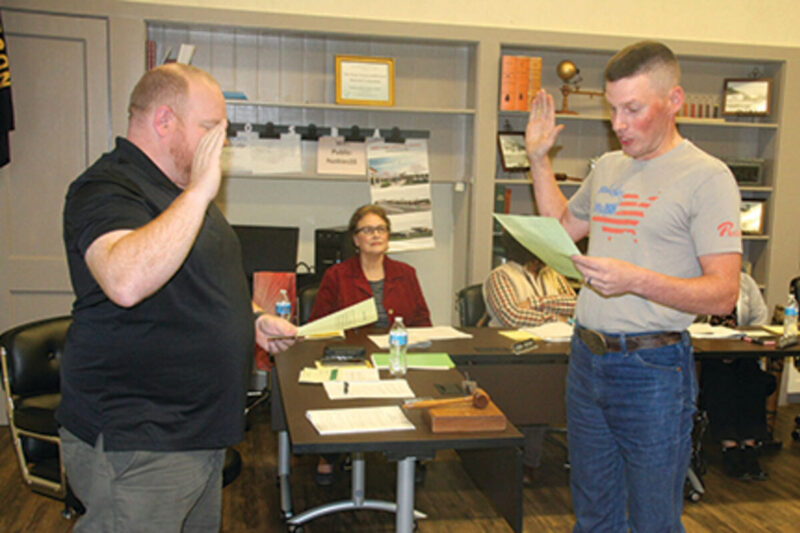Sean C. Morgan
The Sweet Home School District is preparing an application for funding from the Student Success Act passed this year by the Oregon Legislature, a $2 billion tax on gross revenues of more than $1 million per year, to add and boost programs in the district.
The tax takes effect on Jan. 1, Supt. Tom Yahraes told the School Board during its regular meeting on Oct. 14. All of the revenue from the tax is dedicated exclusively to student success.
Under the tax, businesses may subtract up to 35 percent of their commercial activity for the cost of inputs and labor, with exemptions for groceries, utilities, fuel, hospitals and other commercial activities, Yahraes said. It also cuts personal income tax rates by .25 percent except at the top marginal bracket.
He expects the district to begin receiving revenues in 2020-21.
Half of the revenues must be used to expand learning time, for student health and safety, to reduce class sizes and for a well-rounded learning experience, Yahraes said, while up to 30 percent may be spent on statewide initiatives and 20 percent on early learning programs.
The district is estimating funding at $1.7 to $1.9 million locally, Yahraes said, but “I suggest we proceed with caution.”
The legislature and Oregon Department of Education are working with different estimates, and the state has not even started collecting the tax yet, Yahraes said. Potential impacts include the economy, and some forecasts are not positive.
Also, a question remains how Student Success Act funds will impact other state school funding, Yahraes said. “When I talk to some folks who work on policy, they say watch that.”
District officials also need to understand how the funding interacts with the district’s partnership with Sweet Home Charter School, which receives 80 percent of the state funding for its students, Yahraes said, and some additions in staffing this year were intended by the district to be funded by the Student Success Act.
With the uncertainty, Yahraes suggested building contingencies into any plans for the money.
Sweet Home is in a better position than other districts having recently completed a a strategic planning process with public input, said Chief Academic Officer Rachel Stucky. That plan serves as the district’s continuous improvement plan, which is a requirement to receive the funding.
The plan includes a comprehensive needs assessment, goals and strategies to achieve the goals.
Performance growth targets will be set in collaboration between the ODE and the district, Yahraes said. They’ll monitor on-time graduation and fifth-year completion rates, ninth-grade on-track rates, third-grade reading proficiency rates, regular attender rates and other local metrics.
The district must apply for the funding by Dec. 1, Yahraes said, and approval is expected shortly afterward.
The next steps include presentations to district staff, informing the community and awaiting instructions from the ODE about what additional information may be required for the application, Yahraes said.
Yahraes and administrators are working on a draft identifying priorities and resources, Yahraes said, and then he plans to engage staff, students, schools, parents and the community.
“We’ve got to work through it in a deliberate way,” Yahraes said. “We have some ideas. I don’t want to get ahead of those ideas. I want to go through a process.”
Based on the strategic planning process and community, Yahraes has recently discussed funding a music program that includes all elementary grades as well as an auto shop program at the high school.
He said both programs are on the table at this point.
He wants to take those ideas to a “cabinet level” team to discuss them, he said, and make data-informed and research-informed decisions, using stakeholder input and internal data, about the spending.
As an example, Yahraes said, in auto shop, the district needs to determine what kind of program and how much of a program it will have. At the same time, based on state assessment data, the district needs to put in additional support for math at Sweet Home Junior High.
Present at the meeting were board members Jim Gourley, Chanz Keeney, Chairman Jason Redick, Debra Brown, Angela Clegg, Jenny Daniels, Joseph Kennedy and Jason Van Eck.
In other business, the board:
– Appointed Joseph Kennedy to the School Board. Kennedy will serve in the Foster position because no applicants from the zone applied to fill a vacancy. The position was left vacant during the May election. Clegg had previously served in the Foster position but could not run for the seat because she did not live in the area.
Similarly, Clegg is now filling the Crawfordsville position, which had no candidate during the May election. The winning write-in candidate, incumbent Toni Petersen, did not wish to continue serving on the board.
Also applying for the Foster position was Colton Emmert, who withdrew his application at the board meeting believing he was not a registered voter, which is a requirement to serve on the School Board. As he learned later, he actually is a registered voter, said the superintendent’s Administrative Assistant Julie Emmert, who is Colton Emmert’s mother.
– Awarded the Golden Shoe to Hawthorne Elementary School, which turned in the highest attendance rate in the district for September, 96.14 percent. Holley was in second at 96.06 percent, while Oak Heights had an attendance rate of 95.59 percent.
– Held the first reading of annual policy updates governing a wide range of areas, including nondiscrimination, reimbursable meals, criminal records, sexually transmitted diseases, talented and gifted students, harassment and bullying, weapons in school, suspension of student driving privileges and use of restraint or seclusion.
– Approved the hiring of Brittany Kauffman as a teacher on special assignment as a student services specialist at Sweet Home Junior High.





